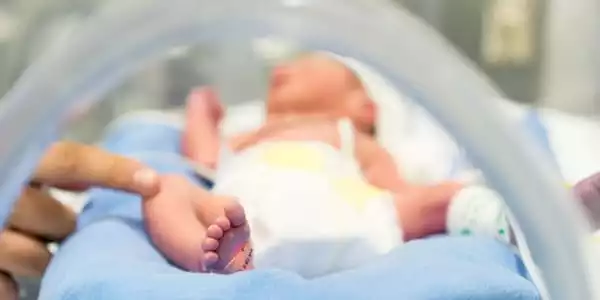A new UCSF study that mapped the neural connections of newborns with two types of brain injuries discovered that the maps looked very different – and were associated with significantly different developmental outcomes years later.
The study, led by UCSF pediatrics, neurology, and radiology researchers, used diffusion MRI to visualize the brain wiring of two groups of newborns: one with congenital heart defects (CHD) and the other with hypoxic-ischemic encephalopathy (HIE), also known as birth asphyxia.
HIE babies suffer brain injury and oxygen deprivation within days to hours of birth, whereas CHD babies are continuously deprived of oxygen in utero for longer periods of time, often months. Both groups are known to be predisposed to neurodevelopmental disabilities as they age, with issues ranging from motor skills to attention to behavioral issues.
You have two kids who have a brain injury before or during birth and then end up with some delayed or altered development and problems at school age. We wondered if the newborn brain responds in the same way when faced with a challenge at different times. We discovered that the brains of these two groups of babies were very, very different.
Professor Patrick McQuillen
“You have two kids who have a brain injury before or during birth and then end up with some delayed or altered development and problems at school age,” said Patrick McQuillen, MD, UCSF professor of pediatrics and neurology and the study’s corresponding author. “We wondered if the newborn brain responds in the same way when faced with a challenge at different times. We discovered that the brains of these two groups of babies were very, very different.”
Brain differences linked to outcomes
The researchers discovered that the differences in brain wiring between the groups later correlated with motor and language outcomes. They discovered that CHD newborns had poorer language function at 12 to 18 months and poorer cognitive, language, and motor function at 30 months than HIE newborns, whose outcomes were normal at both time points.
At 12 to 18 months, approximately 20% of CHD babies scored below the normal language range; by 30 months, the number had increased to 50% below normal. Furthermore, at 30 months, 37 percent of CHD children scored below normal in the cognitive domain and 25 percent scored below normal in the motor domain. Language delays appeared to be driven by expressive, not receptive, language deficiencies, the study authors noted.

The main difference in imaging between CHD and HIE brains was in an area called “global efficiency,” which measures how easy it is for a connection to be made from one area of the brain to another. According to McQuillen, an efficient brain is similar to a traffic system with an ideal balance of highways and local roads that get a driver where she needs to go quickly.
The researchers will continue to follow the babies in the study, and they have recently been awarded a grant from The Children’s Heart Foundation to conduct additional brain imaging and testing of the subjects when they reach school age. Researchers hope that by better understanding how brain connections work and how they relate to developmental outcomes, they will be able to connect children with brain injuries to early intervention more quickly. Eventually, children may be able to receive treatments that are specific to their type of brain injury.
According to a new study, a lack of oxygen at birth does not have to result in a severe brain injury for the baby to develop delays and brain damage. Even a minor lack of oxygen during or shortly after birth can cause significant harm.
Babies who experienced mild deprivation were found to be more prone to learning difficulties and other issues as they grew older. These children were five years old and had a variety of conditions, including delayed speech, attention deficit disorder, autism, and dyspraxia. Therapeutic hypothermia, which involves cooling the body to 32°C for 72 hours, is increasingly being considered as a strong and effective treatment for infants who have been deprived of oxygen at birth.
“We’re not there yet,” McQuillen admitted. “We’re still describing what’s different and using those differences to make predictions about outcomes. But I’m optimistic about the future.”















